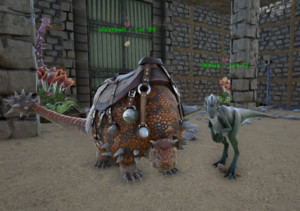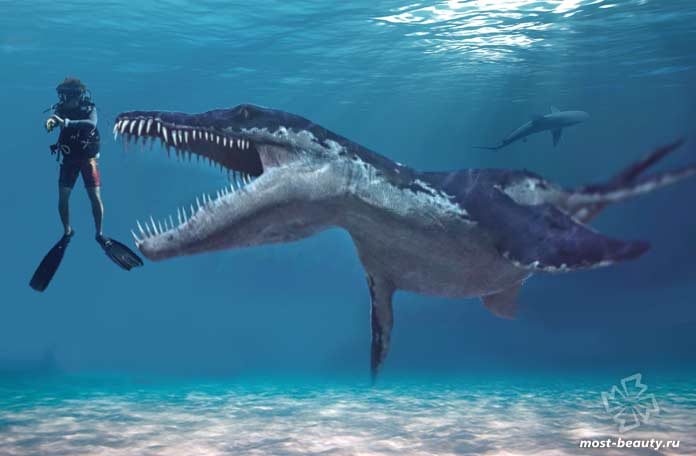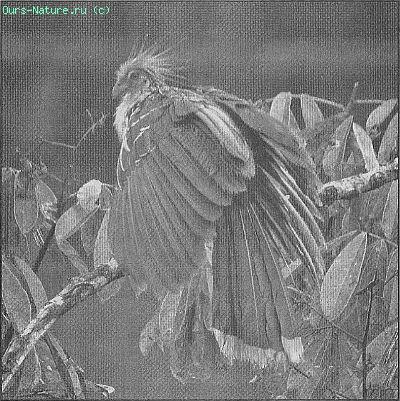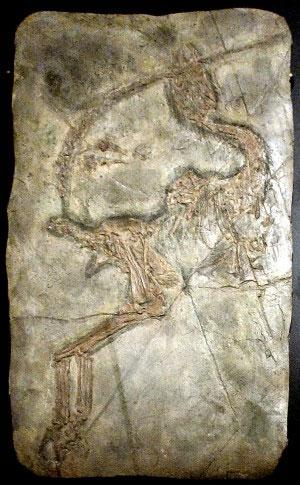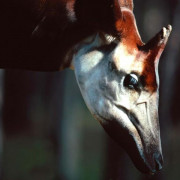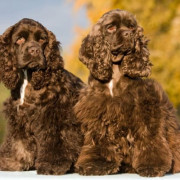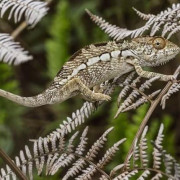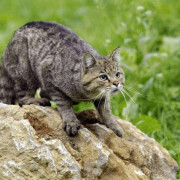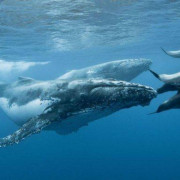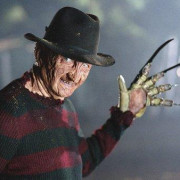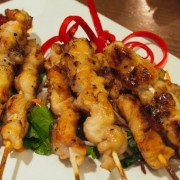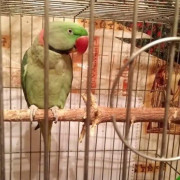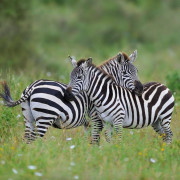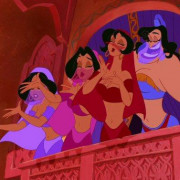Археоптерикс (лат. archaeopteryx)
Содержание:
- Donation to the museum
- Строение скелета
- Переходные формы и таксономия
- Trivia
- Poll
- Способность к полету
- Опровержение теории эволюции Археоптерикс — несуществующая переходная форма
- Paleobiology
- История находки
- История понятия
- Notes/Trivia[edit | edit source]
- In other languages
- Description
- Taxonomy
- Приручение[править | править код]
- Combat[edit | edit source]
Donation to the museum
In Wild World
When the player presents the archaeopteryx to Blathers at the museum in Wild World, Blathers will reply with the following dialogue.
«Archaeopteryx had wings and looked almost exactly like a modern bird, eh wot? As such, most scientists believed it was the true avian ancestor. Our most recent studies however, conclude that the lineage is not direct.
In City Folk
When the player shows Blathers the archaeopteryx in City Folk, Blathers will reply with the following dialogue.
«Hoo, what a wondrous find! Such perfect condition! Archaeopteryx’s feathers… led many people to believe it was the progenitor of the birds, eh wot? Sadly, further evidence indicates it’s likely not a direct relation… The current thinking is that we had other ancestors. Different grand-Blathers for me, wot wot! To be honest, there are almost as many theories as fossils for this beastie. It’s quite a riddle!»
In New Leaf
In New Leaf, a plaque by the display offers information about the fossil instead of Blathers.
«The Archaeopteryx is considered a close relative to the ancestors of modern birds. Despite the similarities, its teeth and three-clawed hands contain marked differences. As its bones were hollow to keep its body lighter and allow for flight, fossils rarely survive.»
In New Horizons
In New Horizons, upon donation or selecting «Tell me more about this!», Blathers will say:
«Archaeopteryx’s feathers led many people to believe it was the progenitor of the birds, eh wot… Sadly, further evidence indicates it’s likely not a direct ancestor—more an evolutionary «uncle,» if you will. Every time a specimen is found, new theories pop up. And new relatives come to roost in the family tree!»
The archaeopteryx is displayed on the right side of the second fossil room, under Deinonychus.
Строение скелета
В большинстве работ палеонтологов археоптерикс описывается как первая птица произошедшая от ящеротазовых динозавров. Некоторые исследователи считают его потомков тероподов. Но на самом деле точное систематическое положение существа до конца не определено, есть версия, что археоптерикс — переходная форма между рептилиями и птицами. Причиной двойственной принадлежности вида к древним пресмыкающимся и птицам стало наличие анатомических особенностей, характерных для каждой из групп.
Строение позвоночника и верхних конечностей
У археоптерикса передние конечности были длинными, с тремя хорошо развитыми пальцами. Формула фаланг: 2–3–4. Заканчивались пальцы длинными загнутыми когтями. Кости пясти и запястья не срослись, полулунная кость составляла часть запястья.
Шейные позвонки археоптерикса двояковогнуты: вогнуты сзади и спереди, что присуще динозаврам семейства дейнонихозавров.
В крестовом отделе позвоночника у археоптерикса пять несросшихся позвонков (у птиц часть поясничных, крестцовые и начальные хвостовые позвонки срастаются в одну кость — сложный крестец, срастаются тазовые кости, а оставшиеся хвостовые позвонки срастаются, образую кость — пигостиль). Подвздошная, седалищная и лобковая кости археоптерикса не образуют единую кость, дистальные концы лобковых костей соединяются и образуют лобковый симфиз, а хвост у археоптерикса длинный и состоит из 21–23 отдельных позвонков.
У археоптерикса были найдены вентральные ребра (гастралии), что характерно для пресмыкающихся, без крючковидных отростков (эти отростки у птиц обеспечивали прочность грудной клетки). Ключицы археоптерикса срастались и образовывали вилочку, что характерно как для птиц, так и для динозавров.
Строение нижних конечностей
Голень состоит из большой и малой берцовых костей, примерно одинаковой длины. Часть костей предплюсны и плюсны не срослись, а это значит, что у археоптерикса отсутствовала цевка.
Большой палец противопоставлен остальным, что является характерным для птиц . На втором, самом длинном пальце задней конечности, рос длинный коготь, что присуще динозавром семейства дейнонихозавров.
Строение черепа
На предчелюстных, челюстных и зубных костях археоптерикса росли мелкие конические зубы, как у современных крокодилов. Предчелюстные кости не срастались. У нижней и верхней челюсти отсутствовал роговой чехол, а значит клювом археоптерикс не обладал. На затылке, сзади, у археоптерикса расположено отверстие, соединяющее позвоночный канал и череп.
Мозг археоптерикса такого же объема, что у современных птиц и в три раза больше, чем у рептилий того же размера. Полушария мозга археоптерикса не окружают обонятельные трактаты и они пропорционально меньше, чем у современных птиц.
Мозжечок динозавра больше, чем у тероподов, но меньше, чем у современных птиц. Зрительные доли мозга расположены спереди. Полет археоптерикса был невозможен без увеличенных зрительных долей и мозжечка.
Положение переднего и бокового полукружных каналов у археоптерикса типично для архозавров, но передний канал длиннее и изогнут в обратном направлении.
Перья археоптерикса
Именно это окаменевшее перо археоптерикса с которого началась история пернатых динозавров
Лондонский и берлинский экземпляры археоптерикса сохранили отпечатки перьевого покрова. Оперение — это ключевая особенность, по которой археоптерикса относят к птицам.
Перья археоптерикса, как и у современных птиц, подразделялись на маховые, рулевые и контурные. Маховые и рулевые перья археоптерикса имеют стержень пера, бородки 1-го порядка и бородки 2-го порядка. Для маховых перьев характерно ассиметричное строение опахал, что типично для современных птиц, способных к полёту. Отличие перьевого покрова современных птиц от археоптерикса — наличие крылышка (подвижного пучка перьев на большом пальце передних конечностей).
Переходные формы и таксономия
Эволюционная таксономия оставалась доминирующей формой таксономии течение ХХ в. Выделение таксонов базируется на различных признаках, вследствие чего таксоны изображают в виде ветвей разветвленного эволюционного дерева. Переходные формы рассматриваются как «падающие» между различными группами в плане анатомии, они смесь характеристик от внутренней и внешней клади, что недавно разделилась.
С развитием кладистики в 1990-х гг. Взаимосвязи обычно изображают в виде кладограмы, иллюстрирующую дихотомическое ветвление эволюционных линий. Поэтому в кладистици переходные формы рассматриваются как более ранние ветви дерева, где еще не развились не все черты, характерные для ранее известных потомков на этой ветке. Такие ранние представители группы обычно называют основным таксоном (англ. Basal taxa) или сестринским таксоном (англ. Sister taxa), в зависимости от того, принадлежит ли ископаемый организм к данной клади или нет.
Trivia
- In real life, Archaeopteryx is considered both a bird and a dinosaur; it is classified as a deinonychosaur, meaning that it is most closely related to Velociraptor and other Dromaeosaurs along with birds.
- In 2011, color was discerned in the feathers of Archaeopteryx by paleontologists through the examination of fossil pigments using an electron microscope and x-rays, making it one of the few dinosaurs for which color is actually known. Other dinosaurs for which color is known to include three or four species from China. Thus, it was shown that Archaeopteryx’s true color was differing shades of black, much like the color of a crow or raven.
|
Poll
Do you like Archaeopteryx?
| Film-based kaiju | |||||||||||||||||||||||||||||||||||||||||||||||||||
|
Godzilla kaiju |
|||||||||||||||||||||||||||||||||||||||||||||||||||
|
Способность к полету
Строение перьевого покрова (ассиметричное строение маховых перьев) подтверждает тот факт, что археоптерикс был способен летать. Но ученые еще не пришли к общему мнению о том был ли это полет примитивным (планирующим), или более сложным (машущим), как у поздних птиц.
При оценке нагрузки на крыло ученые утверждают, что этот древний ящер был способен только к планирующему полету, так как не мог поднять крыло выше уровня спины, что является необходимым условием для замаха.
Другие исследования указывают что форма тела и размер крыла были нетипичны для планирующих птиц, а вилочка и коракоид служили для прикрепления мышц, двигающих крыло.
Интересным представляется гипотеза, что археоптерикс мог совершать небольшие движения крыльями без замаха. Эти движения совершались во время планирующего полета.
Опровержение теории эволюции Археоптерикс — несуществующая переходная форма
|
Окаменелые останки Aрхеоптерикса
По мнению эволюционистов, археоптерикс — предок сегодняшних птиц, существовавший 150 миллионов лет назад. Согласно теории, некоторые из маленьких динозавров, Velociraptor или Dromeosaur, окрылились и взлетели в результате эволюции. Археоптерикс первым отделился от своих предков и начал летать. Этот выдуманный рассказ публикуется почти во всех эволюционных изданиях.
Тогда как последние исследования останков археоптерикса показали, что это не переходная форма, а лишь вымершая птица, наделенная особенностями, отличными от особенностей современных птиц. До недавнего времени археоптерикс представлялся среди эволюционистов как «полуптица», практически не способная летать. Об этом говорит отсутствие грудины у этой «птицы», так как к ней прикрепляются мышцы, необходимые для полета. У современных птиц, независимо от того, умеют они летать или нет, и даже
у относящихся к другому семейству, к примеру, летающих мышей, имеется эта грудная кость.
Однако найденные в 1992 году седьмые останки археоптерикса поразили эволюционистов. Потому что у этого экземпляра была обнаружена грудина, существование которой отрицалось. В журнале «Nature» эта новая находка описывалась так:
С другой стороны, одним из главных доказательств того, что археоптерикс может летать, стало строение перьев. Ассимметричная структура перьев археоптерикса, ничем не отличающаяся от структуры перьев современных птиц, говорит о превосходных летных способностях. Знаменитый палеонтолог Карл О. Дюнбар подчеркнул: «Благодаря перьям это создание носит в себе все особенности птицы.»(Carl O. Dunbar, Historical Geology, New York: John Wiley and Sons, 1961, стр. 310) Наличие
перьев у археоптерикса выявило также и другую истину: это существо было теплокровным. Как известно, пресмыкающиеся и динозавры — хладнокровные существа, то есть их тело не выделяет тепло, и его температура зависит от окружающей среды. Перья птиц выполняют одну из очень важных функций — поддерживают температуру тела. Наличие перьев говорит о теплокровновности археоптерикса в противоположность динозаврам, т.е. это настоящая птица, которая нуждается в поддержании температуры тела.
Paleobiology
Plumage
Specimens of Archaeopteryx were best known for their well-developed flight feathers. They were crooked and showed the form of flight feathers in birds, with stable vanes. The tail feathers were less crooked and had firm vanes, just like in birds, but the thumb did not yet bear a separately movable tuft of stiff feathers.
The body plumage of Archaeopteryx is less well documented and has just been properly researched in the well-preserved Berlin specimen. Thus, as more than one species seems to be involved, the research of the Berlin specimen’s feathers does not necessarily hold true for the rest of the species of Archaeopteryx. In the Berlin specimen, there are «trousers» of well-developed feathers on the legs; some of which seem to have a plain form feather structure but are quite decomposed.But, in part they are firm and thus can support flight.
A patch of feathers ran down the back which looked much like those of birds in that they were aligned and firm, though not as stiff as the flight-related feathers. Apart from that, the feather traces in the Berlin specimen are limited to a sort of «proto-down» like that found in the dinosaur Sinosauropteryx, decomposed and soft, and might have looked more like fur than like feathers in life (though not in their microscopic structure). These are on the rest of the body, as far as such structures are both preserved and not wiped out by preparation, and the lower neck.
But, there is no sign of feathers on the upper neck and head. While these may have been nude, this may still be an artifact of preservation. It seems that most Archaeopteryx specimens became embedded in anoxic sediment after drifting some time on their back in the sea—the head and neck and the tail are for the most part bent down, which may mean that the specimens had just started to rot when they were embedded, with tendons and muscle relaxing so that the characteristic shape of the fossil specimens was gained. This would mean that the skin was already softened and loose, which is helped by the fact that in some specimens the flight feathers were starting to come off at the point of embedding in the sediment. So it is thought that the pertinent specimens moved on the edge the sea bed in shallow water for some time till buried, the head and upper neck feathers sloughed off, while the more firmly attached tail feathers remained.
Color
In 2011, graduate student Ryan Carney and colleagues did the first colour study on an Archaeopteryx specimen. The team found the structure of melanosome in the single-feather specimen described in 1861. The resultant structure was then compared to that of 87 bird species and was shown to very likely be black. The feather studied was most likely one covert, which would have covered part of the main feathers on the wings. While the study does not mean that Archaeopteryx was all black, it does hint that it had some black color such as the coverts. Carney pointed out that this is in line with what we know of modern flight traits, in that black melanosomes have structural properties that make feathers strong for flight.
История находки
- За всю историю палеонтологии удалось обнаружить и описать 12 экземпляров археоптерикса.
- Впервые нового представителя древнего мира описал в 1861 году Герман фон Майер, на основе отпечатка единственного пера в породах района Зольнхофена нынешней Германии. В том же году в тонкослоистых известняках вблизи Лангенальтайма нашли неполный скелет существа, описанный в 1863 году Р. Оуэном под названием «Лондонский экземпляр». Реконструированный образец стал прообразом рода Archaeopteryx (лат.).
До конца XX века ученые описали еще 8 окаменелостей археоптерикса, найденных в Зольнхофенских горных породах:
- Берлинский. Останки найдены в 1876 или 1877 году Й. Дёрром. Я. Нимейер выменял их у него за корову. Восстановленный образец классифицирован в 1884 как новый вид Archaeopteryx siemensii. (Встречаемое в литературе название этого экземпляра — Archaeornis)
- Харлемский. Найден в 1855. В 1875 Мейер по ошибке принял его за вид птеродактиля. В 1970 Д. Остром детально изучил образец и причислил его к роду археоптериксовых.
- Айхштетский. Этот экземпляр был найден в районе деревни Воркерсцелль в 1951 году, но описан только в 1974 из-за этической дилеммы по поводу ценности находки между владельцем Ф. Фрейем и ученым К. Мейером.
- Максбергский. Скелет без головы и хвоста нашли в 1956, через три года его описал профессор Ф. Хеллер.
- Зольнхофенский. Добыт в 1970 году и по ошибке отправлен в коллекцию Ф. Мюллера под видом останков компсогната. Позднее при открытии нового музея, проводившие оценку образца П. Веллнхофер и Г. Фиоль, установили принадлежность экспоната к археоптериксу.
- Дайтингский археоптерикс отличался от всех образцов местом находки. Окаменелости нашли в 1990 году в отложениях Дайтинга, которые на десятки тысяч лет моложе других находок. Спустя 20 лет оригинал описал Р. Альберсдорфер, в честь которого в 2018 году вид классифицировали как A.
- Мюнхенский. При первичном описании в 1993 образец стал единственной окаменелостью с хорошо сохранившейся грудиной. Впоследствии П. Веллнхофер опроверг поспешный вывод, так как при исследовании в ультрафиолетовом диапазоне грудина оказалась сместившимся участком левой воронковидной кости.
- Фрагментарный экземпляр обнаружил в 1997 году доктор М. Маузер в коллекции частного владельца, имя которого не разглашается. Официально образец не классифицирован, поэтому к роду археоптериксов его зачислили предварительно.
В начале XXI века таксон пополнился двумя новыми экземплярами:
- Термополиский. Плиту с прекрасно сохранившимся отпечатком скелета с местами прикрепления перьев к телу нашли в частной экспозиции в 2005.
- Двенадцатый образец в 2010 году нашел немецкий коллекционер, но мир палеонтологии узнал о находке лишь в 2014. Это старейший из археоптериксов, так как слои породы с окаменелостями археоптерикса на 200–300 тыс лет старше Зольнхофенского известняка.
История понятия
В 1859 г.., Когда была издана работа Ч. Дарвина «Происхождение видов», количество ископаемых остатков была крайне малой, науке не были известны переходные формы. Дарвин описал отсутствие промежуточных форм «как наиболее очевидное и тяжелое возражение, которое может быть против теории», но объяснил это крайней неполнотой геологической летописи. Он отмечал ограниченное количество доступных коллекций в то время, в то же время описал имеющуюся информацию об имеющихся ископаемые образцы с точки зрения эволюции и действия естественного отбора. Только два года спустя, в 1961 году. Был найден археоптерикс, который представлял классическую переходную форму между пресмыкающимися и птицами. Его находках, стала не только подтверждением теории Дарвина, а также знаковым фактом, подтверждающий реальность существования биологической эволюции. С тех пор было найдено большое количество ископаемых форм, которые показывают, что все классы позвоночных животных являются родственными между собой, причем большинство из них — через переходные формы.
С увеличением сведений о таксономическое разнообразие сосудистых растений в начале ХХ в., Начались исследования по поиску их возможного предка. В 1917 г.. Роберт Кидстон и Уильям Генри Ленд обнаружили остатки очень примитивной растения возле поселка Rhynia в Шотландии. Это растение было названо Rhynia. Она сочетает в себе признаки зеленых водорослей и сосудистых растений.
Notes/Trivia[edit | edit source]
For information pertaining specifically to the real-world Archaeopteryx, see the relevant Wikipedia article.
- Dossier revealed on January 4, 2016
- Despite being a winged creature, it can be carried by other (rideable) flying creatures.
- On Scorched Earth, Archaeopteryx can be found wandering the cactus forests.
- On Scorched Earth, there is a humorous glitch that can happen on rare occasions regarding Archaeopteryx. They can be seen flying vertically into the sky for seemingly an endless amount of time, soaring higher and higher on a slow, 90-degree climb towards the top of the map’s skybox. This might be a glitch if an Archaeopteryx has trouble latching onto a Joshua tree, as Archaeopteryx can also be found humorously flying circles around a single tree while calling repetitively.
- Falling with an Archaeopteryx can still sometimes be dangerous; the game uses vectors to determine your flight paths, which means that a large amount of speed down vertically can take time to correct horizontally.
- Though the Archaeopteryx has often been shown a an example of a missing link between dinosaurs and birds, it is incorrect to assume that the Archaeopteryx was an ancestor to birds. Instead, it was a part of the early radiation of Avialae(animals more closely related to a modern bird, like the chicken, than to other memebers of the Paraves, like the Deinonychus) which included the ancestor of Aves(modern birds) in the Late Jurassic.
- Humorously, ever since v279.22, or TLC Phase 2, came to PC, and the Raptor got the pounce ability, there has been a slight glitch. When a survivor gets pounced while holding an Archaeopteryx, ocassionally it too will display the animation as if it were being pouced on its own but still being held. Being pounced just one time while holding the Archa can also tweak the angle at which it faces, meaning while you glide with it in one direction, the Archa will appear to be flying at an angle. This is fixed when the Archa is dropped and picked up again.
- Real world Archaeopteryx were carnivores that ate small animals and insects, however Ark’s Archaeopteryx have adapted to only eating chitin.
- The Archaeopteryx has a curious and stark resemblance to the Microraptor, the only significant difference between the 2 being the Microraptor’s head crest and incredible speed.
- On Valguero, the Archaeopteryx spawns in the Southeastern half of the Redwoods zone.
- Strangely enough on the Ocean Biome in Genesis, Archaeopteryx does not run away from the survivors even if they are touching it.
In other languages
| Archaeopteryx | ||||||||||||||||||||
|---|---|---|---|---|---|---|---|---|---|---|---|---|---|---|---|---|---|---|---|---|
|
| Fossils | |||||
|---|---|---|---|---|---|
|
|
|||||
|
Description
Archaeopteryx lived in the early Jurassic Period, 150.8–148.5 million years ago. Most of the specimens of Archaeopteryx that have been found come from the Solnhofen limestone in Bavaria, Germany, which is a lagerstätte, a rare and stunning geological formation known for its superbly full fossils.
Archaeopteryx was close to the size of a raven, with broad wings that were rounded at the ends and a long tail. It could reach up to 20 inches in length, with a weight of 1.8 to 2.2 pounds.Archaeopteryx feathers, though less documented than its other traits, looked a lot like bird feathers in structure and design. But,Archaeopteryx had a lot of theropod dinosaur traits too. Unlike modern birds, Archaeopteryx had small teeth as well as a long bony tail, traits which Archaeopteryx shared with other dinosaurs of the time.
As it shows quite a few traits of both birds and dinosaurs, Archaeopteryx has often been deemed a link between them. In the 1970s, John Ostrom, following T. H. Huxley’s lead in 1868, argued that birds evolved within theropod dinosaurs and Archaeopteryx was a critical piece of evidence for this argument; it had a number of bird traits, such as a wishbone, flight feathers, wings and a partially reversed first toe, and a number of dinosaur and theropod features. For instance, it has a long ascending process of the ankle bone, interdental plate, an obturator process of the ischium, and long chevrons in the tail. In particular, Ostrom found that Archaeopteryx was remarkably similar to the theropod family Dromaeosauridae.
The first bones of Archaeopteryx were found in 1861; just two years after Charles Darwin wrote On the Origin of Species. Archaeopteryx seemed to prove Darwin’s theories and has since been a key piece of proof for the origin of birds, the transitional fossil debate, and proof of evolution. Indeed, more research on dinosaurs from the Gobi Desert and China has since given more proof of a link between Archaeopteryx and the dinosaurs, such as the Chinese feathered dinosaurs. Archaeopteryx is close to the ancestry of modern birds, and it shows most of the features one would expect in an ancestral bird. But, it may not be the direct ancestor of living birds, and it is not clear how much evolutionary divergence was already found in other birds at the time.
Taxonomy
The relationships of the specimens are problematic. Most specimens have been given their own species at one point or another. The Berlin specimen has been referred to Archaeornis siemensii, the Eichstätt specimen to Jurapteryx recurva, the Munich specimen to Archaeopteryx bavarica and the Solnhofen specimen was referred to Wellnhoferia grandis.
Recently, it has been argued that all the specimens belong to the same species (, 17 April 2004, p.17). However, significant differences exist among the specimens. In particular, the Munich, Eichstätt, Solnhofen and Thermopolis specimens differ from the London, Berlin, and Haarlem specimens in being smaller or much larger, having different finger proportions, having more slender snouts, lined with forward-pointing teeth and possible presence of a sternum. These differences are as large as or larger than the differences seen today between adults of different bird species. However, it is also possible that these differences could be explained by different ages of the living birds.
Приручение[править | править код]
For general infos about domesticating a wild creature see Taming.
Стратегия Оглушенияправить | править код
Можно поймать в Болас, оглушить Арбалетом, используя Транквилизирующие Стрелы. Так же можно схватить летуном, таким как Аргентавис или Птеранодон и поместить в ловушку.
Еда для Прирученияправить | править код
| Уровень 1 | Время | ||||
|---|---|---|---|---|---|
| Простой Корм | 1 | 0:00:17 | |||
| Chitin | 6 | 7 | 2 | 1 | 0:03:21 |
| нокаут: × 10; × 5; × 2; × 3; × 1; × 1 | |||||
| Оглушение понижается: 0.84 / сек., Время, пока всё оглушение не будет исчерпано: 00:02:00 |
| Уровень 30 | Время | ||||
|---|---|---|---|---|---|
| Простой Корм | 2 | 0:00:34 | |||
| Chitin | 12 | 25 | 6 | 3 | 0:06:41 |
| нокаут: × 28; × 12; × 4; × 8; × 2; × 1 | |||||
| Оглушение понижается: 1.39 / сек., Время, пока всё оглушение не будет исчерпано: 00:03:17 |
| Уровень 60 | Время | ||||
|---|---|---|---|---|---|
| Простой Корм | 3 | 0:00:51 | |||
| Chitin | 19 | 54 | 13 | 7 | 0:10:34 |
| нокаут: × 46; × 19; × 6; × 13; × 3; × 2 | |||||
| Оглушение понижается: 1.81 / сек., Время, пока всё оглушение не будет исчерпано: 00:04:11 |
| Уровень 90 | Время | ||||
|---|---|---|---|---|---|
| Простой Корм | 4 | 0:01:07 | |||
| Chitin | 26 | 90 | 22 | 11 | 0:14:27 |
| нокаут: × 64; × 26; × 8; × 18; × 3; × 2 | |||||
| Оглушение понижается: 2.19 / сек., Время, пока всё оглушение не будет исчерпано: 00:04:50 |
| Уровень 120 | Время | ||||
|---|---|---|---|---|---|
| Простой Корм | 4 | 0:01:07 | |||
| Chitin | 32 | 126 | 32 | 16 | 0:17:47 |
| нокаут: × 82; × 34; × 10; × 23; × 4; × 2 | |||||
| Оглушение понижается: 2.54 / сек., Время, пока всё оглушение не будет исчерпано: 00:05:20 |
| Уровень 150 | Время | ||||
|---|---|---|---|---|---|
| Простой Корм | 5 | 0:01:24 | |||
| Chitin | 39 | 171 | 44 | 22 | 0:21:41 |
| нокаут: × 100; × 41; × 12; × 28; × 5; × 3 | |||||
| Оглушение понижается: 2.88 / сек., Время, пока всё оглушение не будет исчерпано: 00:05:45 |
Обратите внимание, что значения для оптимальных случаев, всегда приносят дополнительные бонусы!
Для зависящего от уровня количества необходимых ресурсов, попробуйте внешний калькулятор приручения.
Ингредиенты для Простой Корм:
1 × Жареная Рыба
, 1 × Маленькое Яйцо
, 5 × Волокно
, 5 × Межоберри
, 2 × Морковь
, 1 × Вода
Combat[edit | edit source]
This section describes how to fight against the Archaeopteryx.
Weaponryedit | edit source
Because the Archaeopteryx is quick to flee from any fight, it is best to use ranged weapons such as the Crossbow or Longneck Rifle. However, as long as the player has leveled up in movement speed at least a few times, and isn’t encumbered, it should be easy enough to run down a fleeing Archaeopteryx and finish it off with a melee weapon like the Pike.
Dangersedit | edit source
There is no danger from the Archaeopteryx itself. However, the environment in which it resides has plenty of other predators to worry about.
